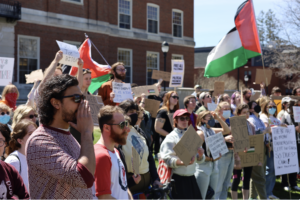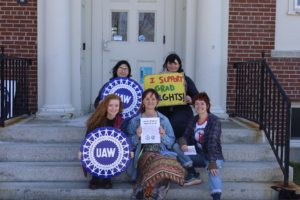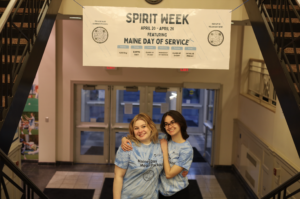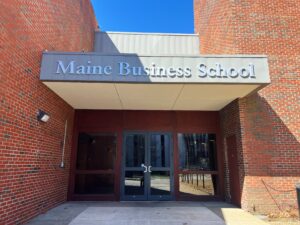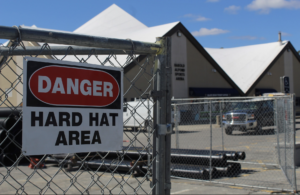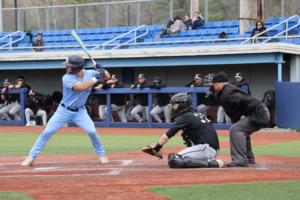The University of Maine’s Fogler Library hosted a panel discussion on the importance of diversity in children’s literature called “Mirrors, Windows, and Sliding Doors” on April 6. The event was live streamed over the Fogler Library YouTube channel and featured a handful of children’s authors, illustrators and publishers.
The event began with a brief introduction and welcome from Amber Gray, a subject specialist from Fogler Library. Gray then passed the event to Krista Aronson, a professor from Bates College, who introduced the panelists and explained the origins of the event’s title.
“Mirrors, Windows, and Sliding Doors” is the title of a paper by Rudeen Sims Bishop, which describes the uses of literature as a means of seeing and understanding the world in new ways. The panelists included Rajani LaRocca, a children’s book author; Heidi Heilig and Lisa Bunker, who are middle grade and young adult authors; Daniel Minter, a children’s book illustrator and Julie Bliven who is an editor for Charlesbridge publishing company.
The first question Aronson posed to the panel was about why they each accepted the invitation to the talk. Many of the panelists responded by speaking to the importance of the conversation of diversity in children’s literature, and the ways in which they feel that it is important to be able to identify oneself in the books they read.
“I loved books when I was a young kid. I loved reading all kinds of stuff, everything I could get my hands on. But, as somebody whose parents came from another country and who grew up in this country, I never really saw any books that reflected my experience until I was an adult,” LaRocca responded, speaking to her background as the child of Indian immigrants in the U.S. “Diversity is important [so that] people –– children especially –– see themselves in books. But it’s also important for other people to see real people, and learn about them and empathize with them.”
Bunker built on LaRocca’s sentiments.
“Growing up as an unexpressed trans girl in the seventies and eighties, I just couldn’t find any examples to point to and say ‘I’m like her,’” Bunker added. “And that was part of the reason that it took me as long as it did to transition. I am trying to write the books that I wish I could have found.”
These authors share the idea that it is important to see yourself represented in fiction at a young age, in a way that is authentic and non-damaging to one’s image. Minter added to this conversation from his perspective as an illustrator.
“When I was young I did not encounter books that had pictures of black people –– well I did, but they were not complimentary,” Minter said, stating that he didn’t truly feel represented until later on in his life. “In middle school, we came across a book that had collective stories from Harlem Renaissance writers. I particularly remember the diversity of the voices in that book.”
There was a resounding sense of duty amongst the panelists, who felt that their work is necessary to create a body of diverse literature that is reflective of the diverse world in which we live. The next question addressed the issue of how these various creators go about accomplishing these goals.
“Most of my stories don’t have to do with identity, they have to do with an Indian-American kid who’s just doing something,” LaRocca explained, discussing how her writing process focuses on providing a diverse cast of young characters her readers can relate to. She gives the example of her debut work, entitled “Midsummer Mayhem,” as an example: “In this story [the main character’s] Indian heritage is just a part of who she is.”
The group also discussed the ways in which these stories are marketed in the industry, and how this work can be continued in broader communities.
“We have these conversations a lot about the metadata and ideally a book that is a diverse title would go out in the world and be received on a playing field just like any other title that isn’t by a marginalized voice or creator,” Bliven said, speaking to the issue from a publisher’s standpoint. “But, at the same time, books are a product of the world in which we live. I do think it’s exciting that a lot of media is trying to right the ship, and make up for the fact that enriching stories by marginalized voices have long been missing from the marketplace.”
Bliven also spoke to the importance of continuing the work that has been started. Heilig and Minter joined the conversation on writing about experiences with diverse groups of people.
“A good place to start is with your own life, surrounding yourself with diverse people and including them in your artistic expression,” Minter said. “If there is a lack of diverse people in your life what is that saying about the way you are living?”
“I ask myself that very question,” Heilig responded to his question. “It is so hard to overcome systemic boundaries and create meaningful friendships, but one thing that can help is buying the work of diverse groups of peoples.”
In supporting each other’s voices and reading the works of diverse groups there are boundaries that are overcome.
“Books can help us form those relationships, friendships and understandings. Books can be a way of building community,” Aronson summarized.
The panel concluded with a brief Q&A segment, which touched on the issues of having these conversations about diversity with children, and on the importance of quality literature and representation. The panelists continued to speak to the importance of honest and open dialogue,and of providing a vast amount of diverse stories to children of all backgrounds, so they can see themselves as well as others in works of literature.
